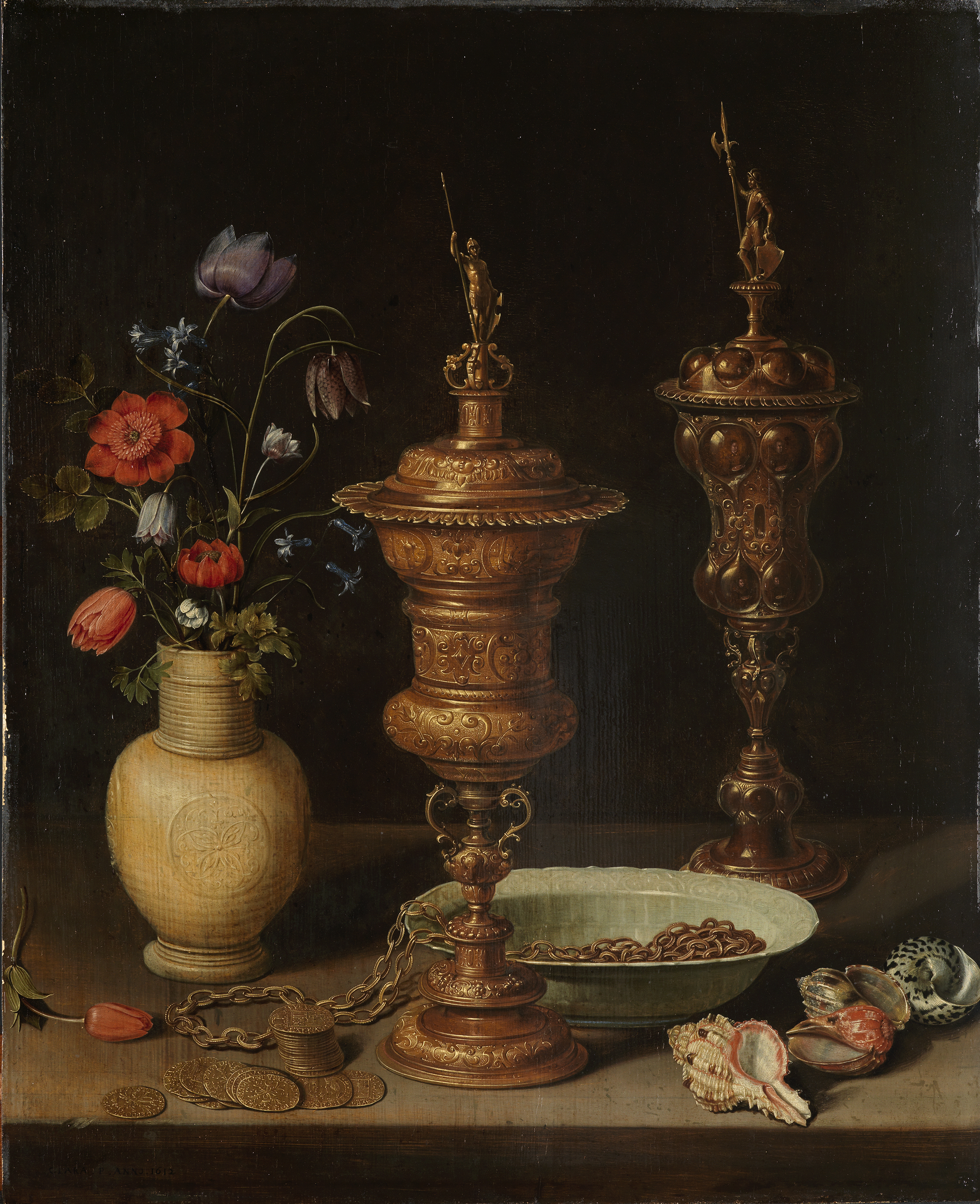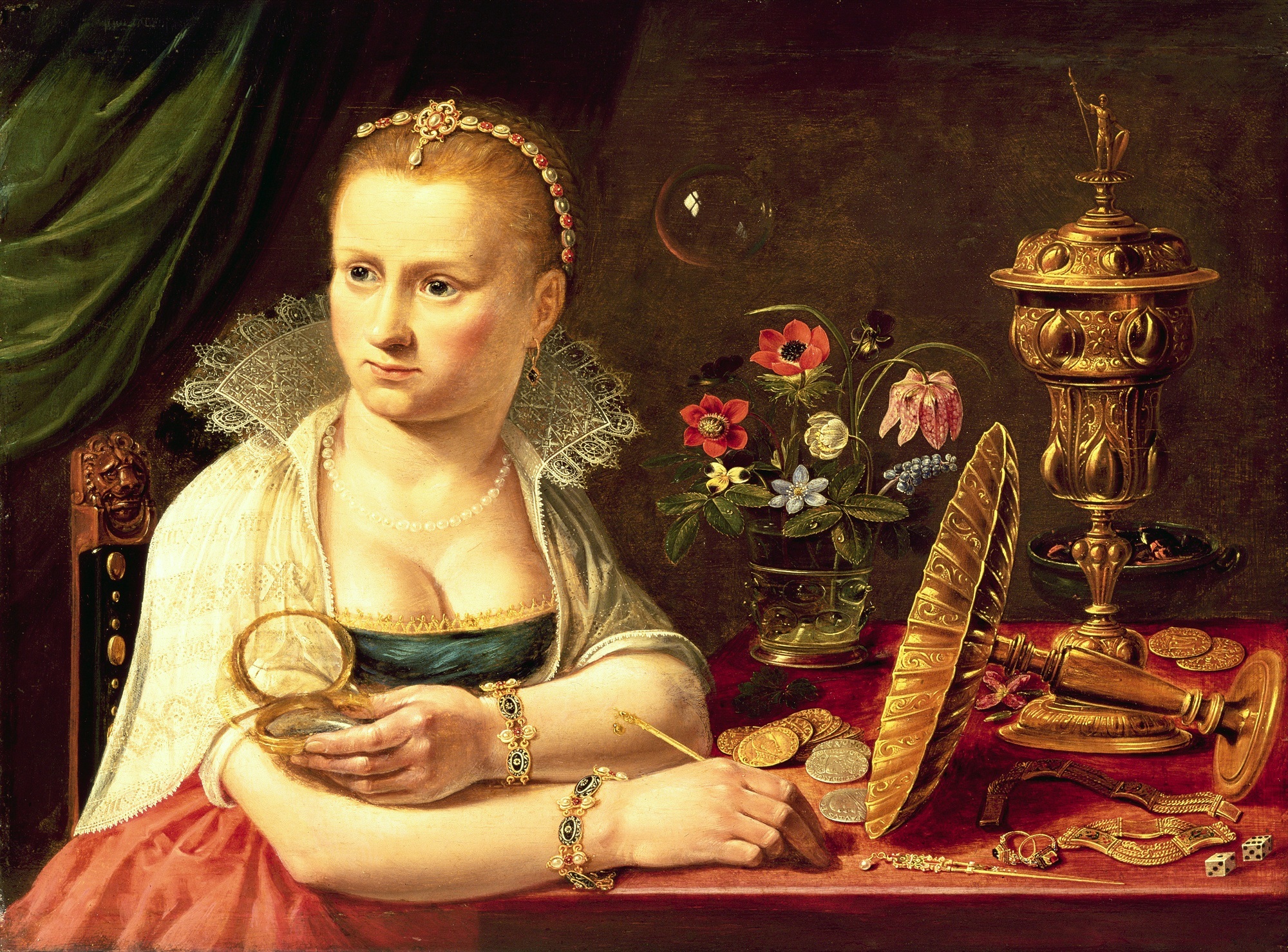Clara Peeters was a 17th century Flemish painter famous for her still lifes. She is considered one of the first representatives of this genre. The artist, whose date of birth we do not know exactly (about 1580 to 1590), created this very finely painted work in 1612. It is one of the few signed and dated works from the early period of still life painting. We present today's work thanks to the Staatliche Kunsthalle Karlsruhe.
All objects arranged in the still life are presented neatly and carefully on a tabletop. Very sculptural, sharply drawn, and describing their individual material character they are reproduced in front of a black background. These are precious and rare objects, as they were also kept in collections of the Baroque period, the so-called cabinet of curiosities or Kunstkammer. The painting depicts works of art created by man and nature, as in the terminology of that time: artificialia and naturalia. The Chinese porcelain bowl and the exotic snail shells furthermore refer to faraway countries and thus to the world-spanning trade of the Dutch. But all riches, also represented by the goblets, chains, and coins, are transient. The rapidly fading flowers in the clay jug and especially the single tulip on the table are a reminder of this.
Clara Peeters has immortalized herself in the painting not only through her signature but also through several tiny self-portraits; we see the artist as a reflection (each time in a slightly modified perspective) on the convex humps of the columbine goblet on the right.
Clara is one of the women artists highlighted in our Women Artists Notebook; please check it out in our shop. : )
P.S. Every day we get to know about another stunning woman artist forgotten by the history, check here for an amazing colleague of Peeters, Fede Galizia, and her beautiful still-life with these super yummy peaches!


 Clara Peeters
Clara Peeters